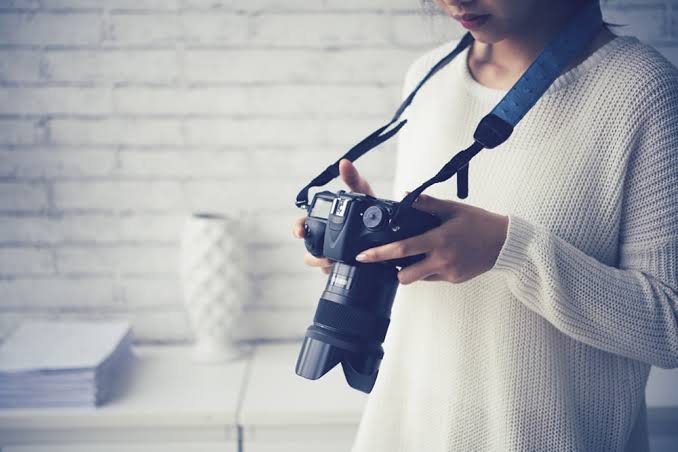Explore the world of fine art photography by pushing creative boundaries. Discover how to enhance your artistic vision through conceptualization, visual experimentation, material innovation, and personal expression. Learn to challenge conventional techniques and create impactful, original work that resonates with viewers.
Fine art photography, unlike photography or photojournalism, focuses on showcasing creativity and artistic vision. Its aim is to communicate the photographers unique perspective and stir emotions in the audience. Expanding the horizons of this form of art means delving into techniques, ideas and viewpoints. This not enriches the work. Also questions the definitions of what qualifies as art. In this discussion well explore ways for photographers to stretch their limits in fine art photography by emphasizing originality, exploration and individuality.
Defining Fine Art Photography
Fine art photography goes beyond snapping pretty pictures; it involves crafting visual narratives that showcase an individuals perspective and creative purpose. In contrast to photography, focused on meeting client demands and business objectives fine art photography serves as a medium for self expression and discovery. This style emphasizes the artists unique voice and vision providing a space to play around with styles, subjects and formats.
The Role of Conceptualization
In the realm of fine art photography pushing boundaries requires an approach. This process involves crafting a concept or idea that will steer the artistic journey. A well defined concept lays the groundwork for the artwork and influences choices throughout the project.
Delving Into Themes: Explore a range of themes that resonate with interests or address societal topics. Themes like identity, nature, technology or abstraction can serve as springboards for exploration. Each theme presents opportunities to play with representation and storytelling.
Building A Narrative: Think about how your photographs can narrate a story or communicate a message. Developing a narrative can contribute to a body of work that captivates viewers on an emotional level. This narrative can be straightforward or abstract, based on your artistic aspirations.
Visual Experimentation
One of the signs of pushing boundaries in creativity is the exploration of techniques. This approach involves stepping outside the realm of methods and discovering new ways to capture and showcase visuals.
Camera Techniques: Play around with settings like exposure, focus and aperture to achieve effects. Techniques such as exposures, multiple exposures or unconventional focusing methods can lead to strikingly unique images.
Composition and Perspective: Break the rules of composition by experimenting with perspectives, framing and angles. Unconventional viewpoints can turn scenes into remarkable visuals. Consider incorporating elements like reflections, symmetry or asymmetry to create visually captivating compositions.
Post Processing: Use tools and software to manipulate and enhance your visuals. Post processing opens up opportunities for expression, such as adjusting colors, adding texture overlays and modifying compositions. However it's crucial to strike a balance between enhancement and authenticity to ensure that the final product stays true to your artistic vision.
Material and Technique Innovation
Advancements, in materials and techniques can greatly influence the creative possibilities in fine art photography. By experimenting with approaches and methods artists can discover outcomes that push the boundaries of their work.
Exploring Processes: Delve into alternative or historical photography methods like cyanotype, tintype or platinum printing. These techniques provide unique visual qualities and can imbue your art with a character. Trying out these processes also adds a touch of history to contemporary photography.
Mixed Media Fusion: Blend other art forms such as painting, drawing or collage with your photography. This combination can result in captivating hybrids that challenge photography norms and offer fresh ways to connect with audiences.
Physical Alterations: Consider modifying prints using techniques like scratching, tearing or layering. These alterations introduce textures and dimensions that enhance the visual appeal of your images.
Personal Expression and Authenticity
The essence of art photography lies, in personal expression. To push the limits of creativity it's important to stay true to your vision and embrace authenticity. Here are some key aspects to consider.
Emotional Connection: Aim to capture photographs that reflect your emotions, experiences or perspectives. The genuineness of your work can deeply resonate with viewers and forge a connection. By showcasing your unique viewpoint and emotional input you can distinguish your art and enhance its impact.
Daring to be Different: Don't hesitate to take risks and challenge established norms. Innovation often comes from stepping out of your zone and venturing into unexplored areas. This openness to experimentation and boundary pushing can result in groundbreaking and influential creations.
Audience Engagement and Interpretation
Connecting with your audience and grasping their perception of your art can offer insights and spark further creative exploration.
Feedback and Interaction: Share your creations with a range of people and invite their input. Learning how individuals interpret and react to your visuals can provide angles and shape your future endeavors. Engaging with your audience also aids in refining your style and enhancing the relevance of your work.
Exhibition and Presentation: Think about how you will showcase and present your art. The way photographs are displayed can impact how they are seen. Trying out formats like large prints, installations or digital displays can influence the viewers experience and understanding.
Conclusion
In the realm of photography pushing the boundaries of creativity involves a blend of brainstorming, visual exploration, material experimentation and individual style. By delving into topics, techniques and approaches photographers can broaden their artistic scope and produce pieces that challenge the standards of fine art. Embracing authenticity and taking bold steps are crucial aspects of this journey leading to photographic works that stand out and make an impact. Ultimately the world of fine art photography flourishes on the willingness to think outside the box and stretch the limits of imagination resulting in art that captures attention, sparks inspiration and resonates with audiences on levels.
